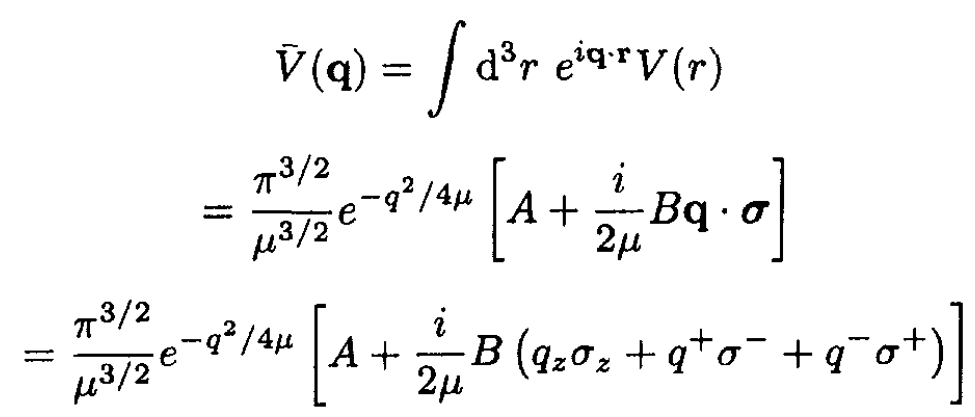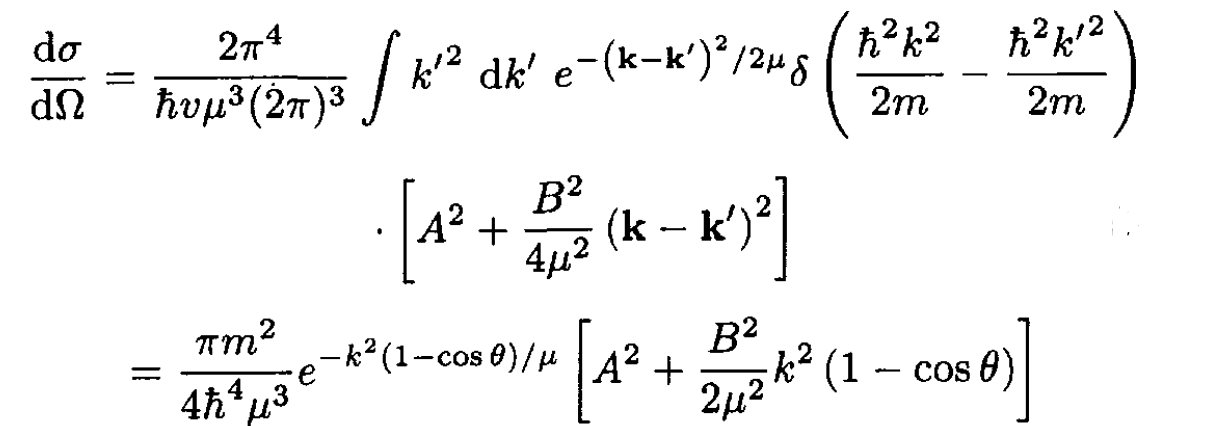
Spin-Dependent Potentials
 المؤلف:
Sidney B. Cahn, Gerald D. Mahan And Boris E. Nadgorny
المؤلف:
Sidney B. Cahn, Gerald D. Mahan And Boris E. Nadgorny
 المصدر:
A GUIDE TO PHYSICS PROBLEMS
المصدر:
A GUIDE TO PHYSICS PROBLEMS
 الجزء والصفحة:
part 2 , p 76
الجزء والصفحة:
part 2 , p 76
 22-8-2016
22-8-2016
 1734
1734
Spin-Dependent Potentials
Consider the nonrelativistic scattering of an electron of mass and momentum k through an angle θ. Calculate the differential cross section in the Born approximation for the spin-dependent potential
 (i)
(i)
where σ = (σx, σy, σz) are the Pauli spin matrices and (μ, A, B) are constants. Assume the initial spin is polarized along the incident direction, and sum over all final spins. (Note: Ignore that the potential violates parity.)
SOLUTION
In the first Born approximation the scattering is proportional to the square of the matrix element between initial and final states. If the initial wave vector is k and the final one is k', set q = k' – k and evaluate
 (1)
(1)
 (2)
(2)
 (3)
(3)
where we have written the transverse components of momentum in terms of spin raising and lowering operators. The initial spin is pointing along the direction of the initial wave vector k, which we define as the z-direction Let us quantize the final spins along the same axis. Now consider how the three factors scatter the spins:
a) The term A is spin independent. It puts the final spin in the same state as the initial spin.
b) Bqzσz is a diagonal operator, so the final spin is also along the initial direction, and this term has a value of Bqz.
c) Bq+σ - flips the spin from to and contributes a matrix element of Bq+ to the final state with the spin reversed.
d) Bq-σ+ gives a matrix element of zero since the initial spin cannot be raised.
When we take the magnitude squared of each transition and sum over final states, we get the factors for spins of
 (4)
(4)
The differential cross section is written as
 (5)
(5)
We have used the fact that energy is conserved, so |k'| = |k|, to set (k' – k)2 = 2k2(1 – cos θ).
 الاكثر قراءة في مواضيع اخرى
الاكثر قراءة في مواضيع اخرى
 اخر الاخبار
اخر الاخبار
اخبار العتبة العباسية المقدسة


